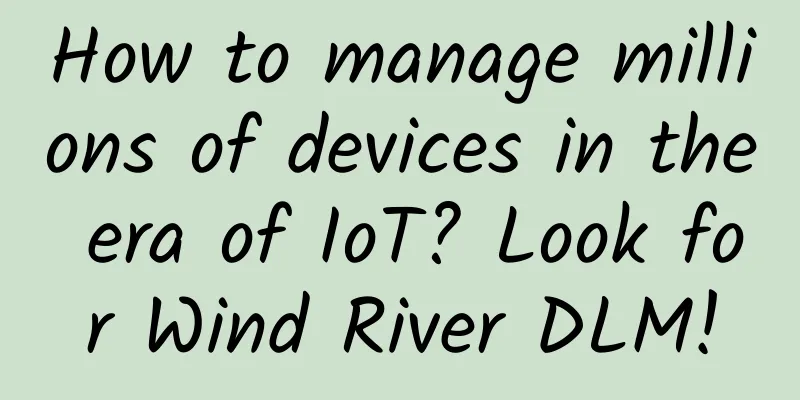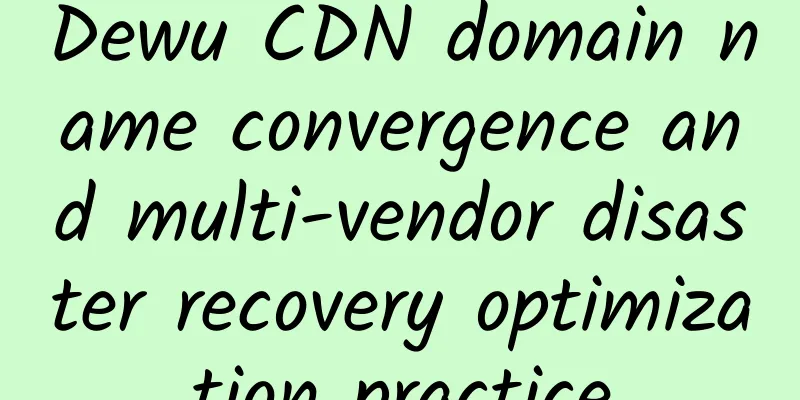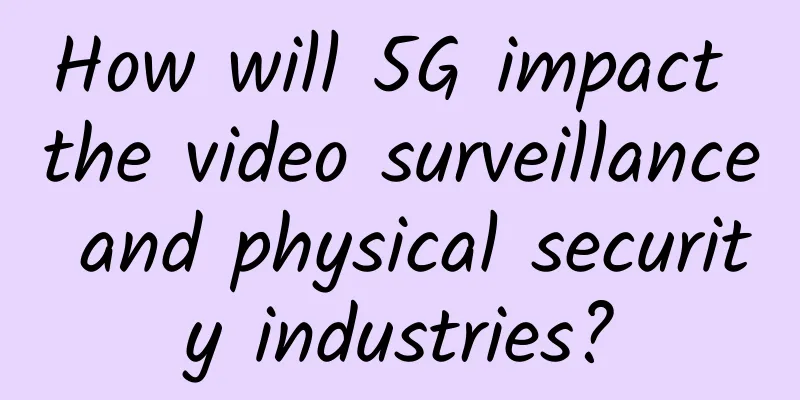How to manage millions of devices in the era of IoT? Look for Wind River DLM!

|
[51CTO.com original article] On August 22, the "2017 Wind River China Developer Conference" was held in Beijing. In addition to sharing Wind River's views on embedded intelligent trends, the conference also set up a branch venue to discuss hot technologies such as intelligent networks, the Internet of Things, security authentication, and virtualization (NFV). At the scene, nearly a thousand developers engaged in the research and development of smart devices attended the conference and had in-depth exchanges and discussions on the implementation and practice of various technologies in the Internet of Things era.
That morning, the reporter interviewed Victor M. Abelairas, senior director of strategy and operations at Wind River's Helix Cloud division, who shared with the reporter Wind River's thoughts and practical deployments in the field of full life cycle management of application equipment.
What does an effective DLM look like? What is Device Lifecycle Management (DLM)? Victor believes that it is the ability to perform common tasks or gateway management in devices. For device suppliers, DLM can help their devices go to market as soon as possible; for system integrators, DLM can help their solutions bring a higher level of security; and for enterprise users, the benefits of DLM are obvious, as it can improve the efficiency of enterprise equipment operations and reduce costs. So what are the key features required for an effective DLM solution? Victor summarized five points: First, it supports the initial delivery and deployment of equipment; second, it can realize deployment and configuration functions through software; third, when the equipment has warnings or problems, DLM can quickly diagnose and handle them; fourth, it has the ability to update equipment remotely; fifth, when the equipment is out of service, there is a visual interface to help dismantle the equipment. "It can be seen that the management of the entire life cycle of equipment runs through before, during and after the application of equipment. In future equipment application scenarios, DLM provides a basic capability. So which factors should be considered in the development stage, and which factors can be modified or built-in during the application process?" Victor gave the answer by listing some actual application cases of Wind River's DLM solution. Five application scenarios highlight the value of DLM Power industry: A European power plant believes that IoT technology can help its users. They installed smart devices like gateways in users' homes so that both parties can understand each other's needs. There are two benefits: First, the power plant can use DLM to understand how much electricity users use and in which time periods the most electricity is used. Then, through some incentives and preferential measures, it can encourage users to adjust household chores such as washing clothes and bathing, which can be adjusted, to non-peak hours to reduce the pressure of peak hours. Another benefit is that customers can use the DLM function of this smart device to control lighting, adjust indoor temperature, etc., for a better experience. Smart home industry: Currently, there are more and more devices connected to the Internet in users' homes. Some functions of some devices require support from other manufacturers. For example, if a washing machine wants to be more intelligent, it needs to know how much detergent to use for what kind of clothes. However, washing machine manufacturers do not understand the usage standards of detergent manufacturers. In this case, equipment manufacturers can deploy DLM in the washing machine operating system and provide users with various parameter options through the DLM software interface, thereby realizing intelligent operation. Environmental protection industry: As we all know, air monitoring is very important for environmental protection. However, air monitoring requires the deployment of millions of monitoring devices and the real-time feedback of air pollution data. The management of these devices is inseparable from the DLM solution, which can remotely manage these devices and ensure that their data is quickly uploaded for reference and decision-making by management departments. Manufacturing: An ultrasonic welding equipment factory used to sell various ultrasonic welding equipment, but they decided to change and provide welding services through digital transformation. This is inseparable from the help of DLM, which helps users better manage equipment, visualize the actual use status of equipment, equipment aging status, and equipment maintenance warnings, greatly reducing management costs. Medical industry: In addition to disposable medical equipment, many medical products need to be disinfected after each use, so every hospital has a lot of disinfection equipment specifically used for disinfection. For these equipment suppliers, upgrading equipment is a headache. In the past, staff had to insert a USB flash drive into the equipment and upgrade it one by one, which took 4-6 months. However, with the DLM solution, equipment suppliers can upgrade thousands of devices at the same time, saving a lot of manpower and material resources. What makes Wind River DLM unique? Victor told reporters that security is the most special part of the entire equipment management cycle. It not only runs through the entire cycle, but more importantly, it must be taken into consideration at the initial development stage. In the Wind River DLM solution, the focus is on the integrity, confidentiality and availability of user information security. "Wind River uses multiple technical means such as encryption, identity authentication, complete verification, and login permission division to achieve full equipment security protection." In addition to its outstanding performance in security, what other features does Wind River's DLM have? Victor believes that first of all, Wind River's DLM products can connect to more devices. Ordinary device management software can only connect to thousands of devices, but Wind River can manage millions of devices at the same time, which is more in line with the needs of the Internet of Things era; secondly, Wind River DLM is more flexible, supporting not only public cloud and private cloud, but also hybrid cloud; thirdly, Wind River's historical accumulation in the operating system and industrial control markets gives Wind River's software products more excellent genes. "According to the data we have learned, China has the fastest growth rate in the development of the global IoT industry. From 2017 to 2021, it will maintain an annual increase of 36%. The market size is expected to be US$5.44 billion in 2017 and is expected to reach US$25.81 billion in 2022." In an interview with ***, Victor said that Wind River attaches great importance to the Chinese market and hopes to jointly explore the IoT market with Chinese partners. [51CTO original article, please indicate the original author and source as 51CTO.com when reprinting on partner sites] |
<<: Huawei Connect 2017 previews: Emphasis on cloud implementation and practice
>>: Practice: Can changing the “region” really enhance wireless signals?
Recommend
The history of the changes in Spring Festival Gala red envelopes: Why are Internet giants rushing to appear on the Spring Festival Gala?
The Spring Festival is getting closer and closer,...
Liu Yunjie: Determinism, programmability, and cloudification will become the future network trends, comprehensively improving network service customization capabilities
At the "2020 Network 5.0 Summit", when ...
ServerKurma: $3/month KVM-2GB/20GB/1TB/Türkiye VPS
ServerKurma is a foreign hosting company founded ...
What is the principle of WebSocket? Why can it achieve persistent connection?
[[396397]] To better understand WebSocket, we nee...
New infrastructure: Should we pursue this biggest “trend” in 2020?
If you want to find a keyword that can dominate t...
Wu Hequan, academician of the Chinese Academy of Engineering: 5G technology is very immature and the operating costs are extremely high
According to domestic media reports, on October 1...
With the advent of the 5G era, will the divorce rate drop?
01 The divorce rate remains high during the epide...
Smart City - Application Areas of 5G
Smart city is one of the three major application ...
4G investment has been frozen. China Telecom: It will take 3-4 years before you can use 4G and 5G with confidence
5G exploded in China in 2020. Have you changed yo...
Will your package be slowed down if you don’t upgrade to 5G? 4G network speeds of the three major operators were measured in four locations in Beijing
"China Unicom launched a 5G package for 239 ...
AI and 5G synergy: Unleashing the full potential of the digital age
In the evolving technology landscape, two breakth...
V5.NET: Hong Kong cloud server 60% off from 36 yuan/month, Hong Kong independent server 60% off from 390 yuan/month
V5.NET upgraded its business management system at...
Nine 5G trends to watch in 2021
Research firm Omdia believes that several 5G tren...
iQIYI Annual Card + JD Plus Membership Annual Card 138 RMB
This year, the prices of various video and music ...









